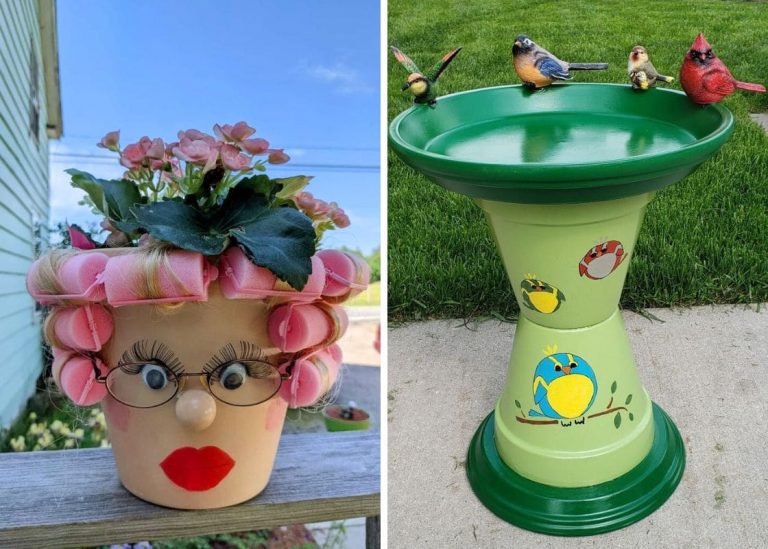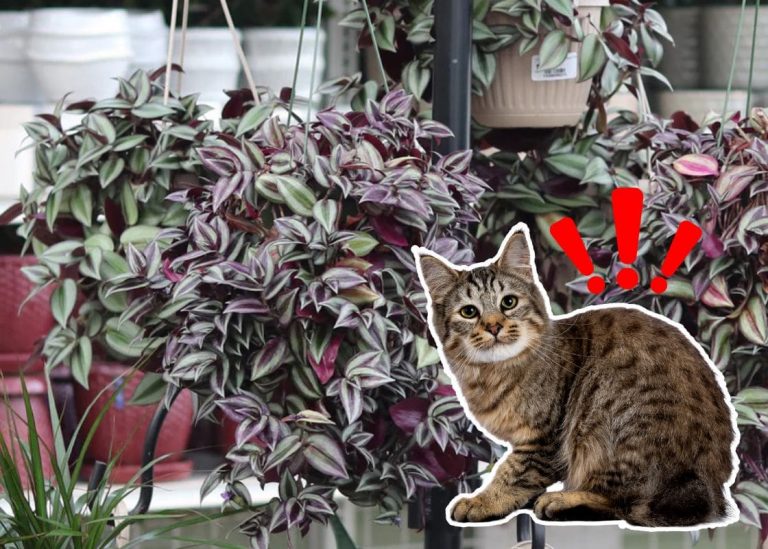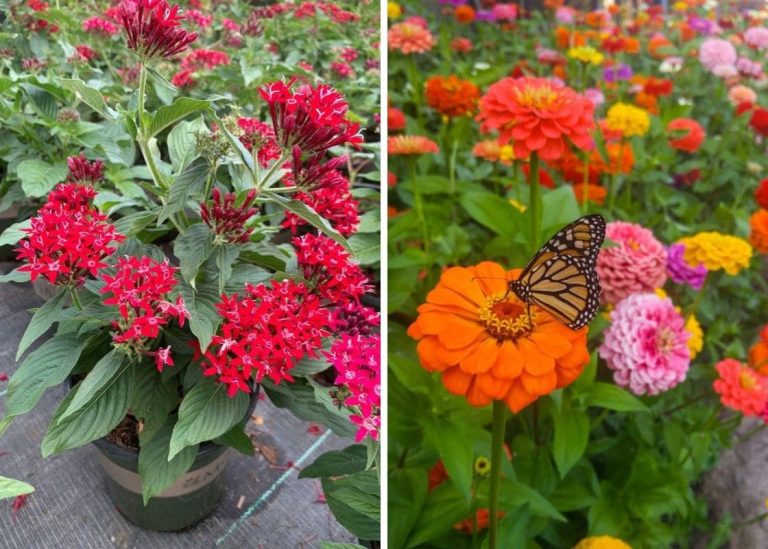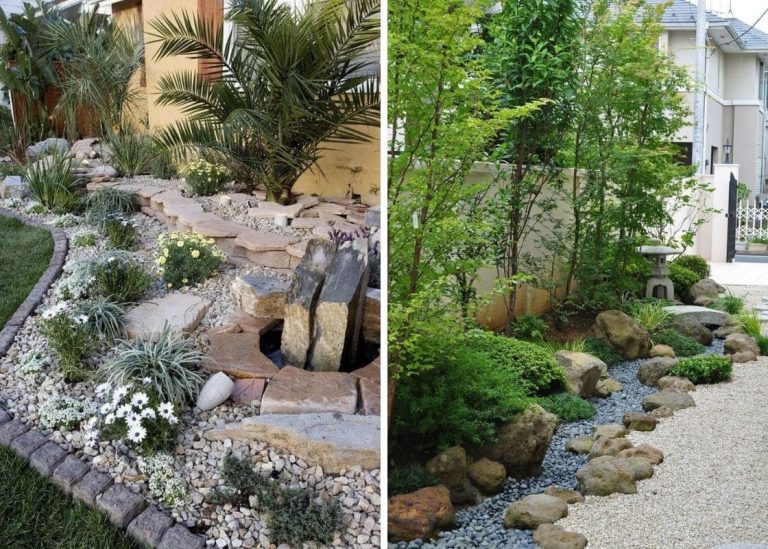Top 20 Shade-Loving Flowers to Beautify Your Garden
I never used to pay much attention to the shady parts of my garden. I focused on the sunny spaces—the ones bursting with zinnias, marigolds, and radiant light. But there was a quiet, mossy corner beneath our old oak tree that felt forgotten, even to me. For years, it sat empty. Too dark, too damp, too challenging.
Then, one afternoon in early spring, I visited an open garden tour hosted by a retired teacher named Elaine. Her backyard was nothing short of enchanting, and to my surprise, the shadiest corners held the most mesmerizing blooms. Soft-pink hellebores nodded in the breeze, delicate foamflowers crept along the edges, and ferns waved like tiny dancers in the filtered light.
“Shade has its own kind of magic,” she told me with a wink. I went home inspired, and slowly, plant by plant, I transformed that once-overlooked spot into my personal woodland retreat. Now, it’s my favorite place to sit in the morning—cool, quiet, and humming with life.
If you’ve got a shadowy patch in your yard, don’t write it off. Let me walk you through some of the most beautiful, shade-loving flowers that have not only thrived in my own garden but also in the gardens of friends, neighbors, and kind strangers who’ve shared cuttings and stories over the years.
#1. Hosta Flowers (Hosta spp.)
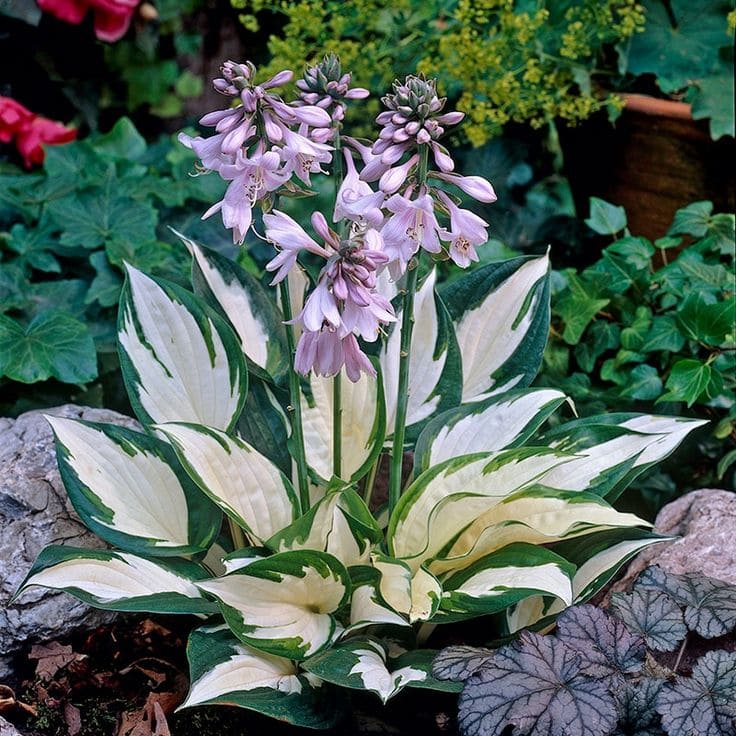
Hostas are the gentle giants of the shade garden. Most people love them for their leaves—lush, ribbed, and often two-toned in greens, blues, and creams. But if you’ve never let one fully bloom, you’re missing a treat. Their delicate lavender or white trumpet-shaped flowers sway above the foliage on tall, elegant stalks.
I once had a row of plain green hostas that bloomed after a particularly rainy June, and the fragrance was soft, almost like lilac but cooler. They thrive in full to partial shade and prefer soil that stays moist but never soggy.
My tip: Keep slugs away by scattering crushed eggshells or diatomaceous earth around the base. These beauties deserve a clean stage to perform.
#2. Astilbe (Astilbe spp.)
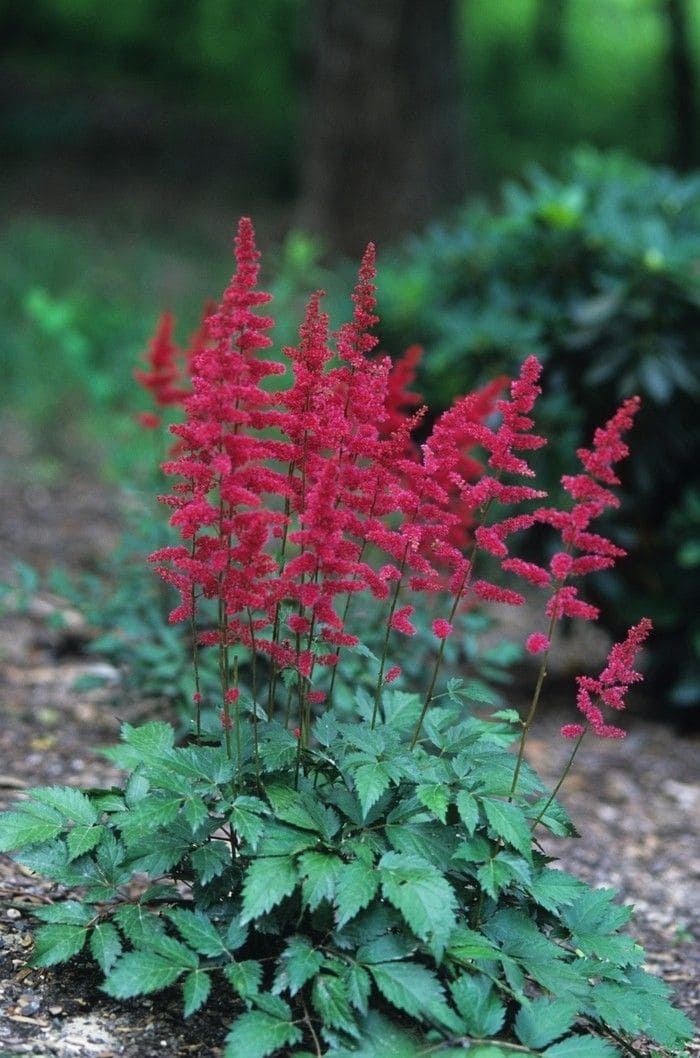
Astilbes are like feathers dipped in pinks, reds, and purples. Their plume-like flowers rise above ferny foliage, and when they catch a breeze, they seem to dance. I planted a few under our dogwood tree and was amazed by how quickly they turned that shady bed into a romantic, storybook corner.
They love damp, rich soil—think humus and compost—and will reward you for keeping the moisture consistent. Perfect for borders or paths where you want soft texture and color.
Note: Deadhead spent flowers to keep them looking tidy, but even the faded plumes add charm when left alone.
#3. Bleeding Heart (Lamprocapnos spectabilis)
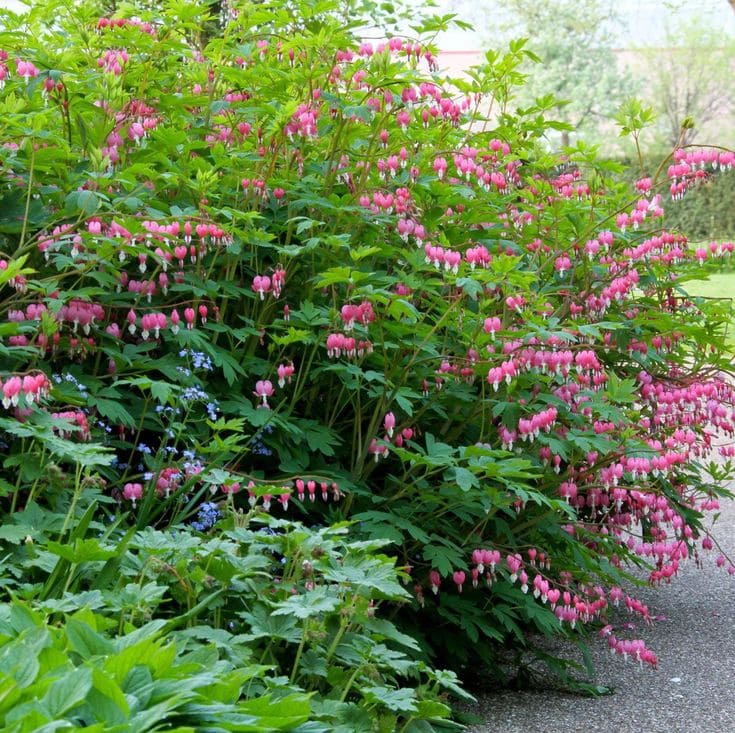
This one tugs at the heart—literally and figuratively. With arched stems dripping heart-shaped blooms, it’s impossible not to pause and stare. I planted my first bleeding heart beside a weathered bench, and every spring, it draws more compliments than any rose.
They bloom early and then retreat in summer’s heat, so I like to pair them with hostas or ferns to fill in the gap. Keep them in moist, shady spots, and they’ll return year after year like an old friend.
A friend once told me her grandmother called it the “story flower” because she would make up fairy tales about each pink bloom. I think of that every time mine bloom.
#4. Impatiens (Impatiens walleriana)
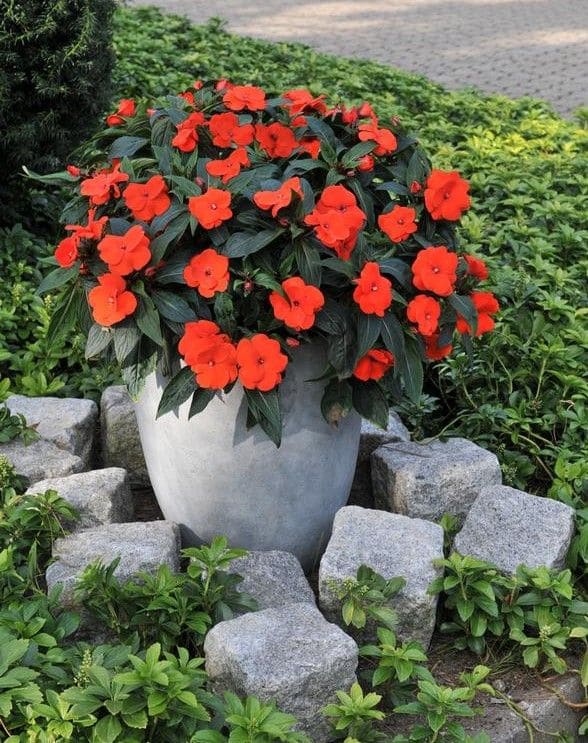
If you want easy color, impatiens are your answer. These cheerful blooms come in pinks, reds, whites, and oranges, and they don’t complain about the lack of sun. I use them in window boxes on the north side of our house—no other flower puts on such a long show in the shade.
They do need regular watering, especially in pots, but aside from that, they’re carefree and endlessly rewarding. Great for beginners, or for filling in beds where other things struggle.
My tip: Don’t crowd them—give a little breathing room, and they’ll grow bushier and brighter.
#5. Foxglove (Digitalis purpurea)
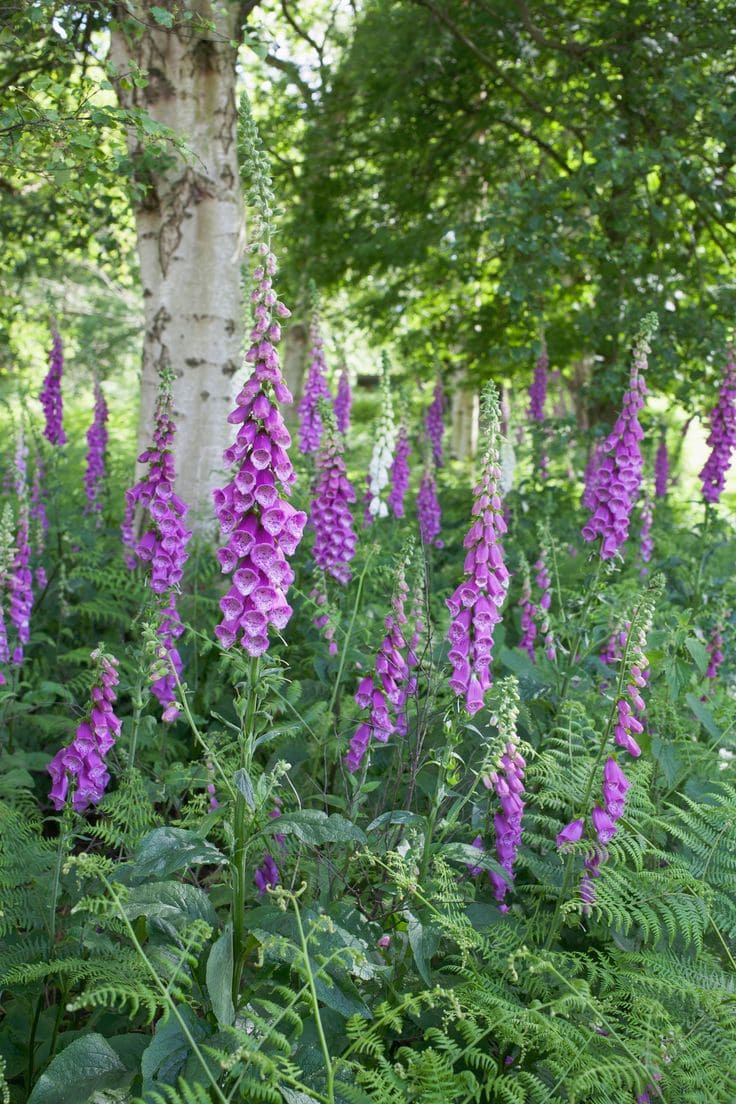
Tall, regal, and just a touch mysterious, foxgloves bring vertical magic to shady corners. Their bell-shaped blooms stack up like little cottages for garden fairies, and the bees adore them. I have a spot behind the shed that gets only dappled sun, and the foxgloves have made it their kingdom.
They prefer moist, well-drained soil and bloom in their second year, so plant with patience. But oh, the payoff is worth it.
Caution: All parts are toxic if ingested, so plant away from curious pets and kids.
#6. Fuchsia (Fuchsia spp.)
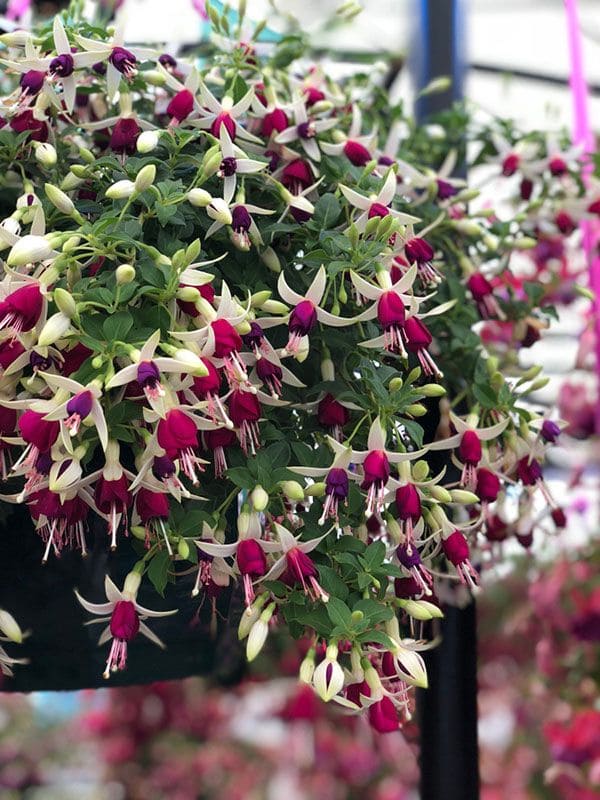
Fuchsias are the ballerinas of the shade garden. Their delicate, drooping blooms—part skirt, part chandelier—flutter with every breeze. I first fell in love with them at a neighbor’s house, where they spilled over a hanging basket on her shady porch like pink and purple fireworks.
They prefer cool, shady spots with regular moisture and don’t like to dry out. Perfect in containers, they add instant elegance to patios and verandas. When they bloom, hummingbirds come calling.
Tip: Pinch back early growth to keep them full and bushy, and feed regularly to keep the flowers coming.
#7. Lungwort (Pulmonaria spp.)
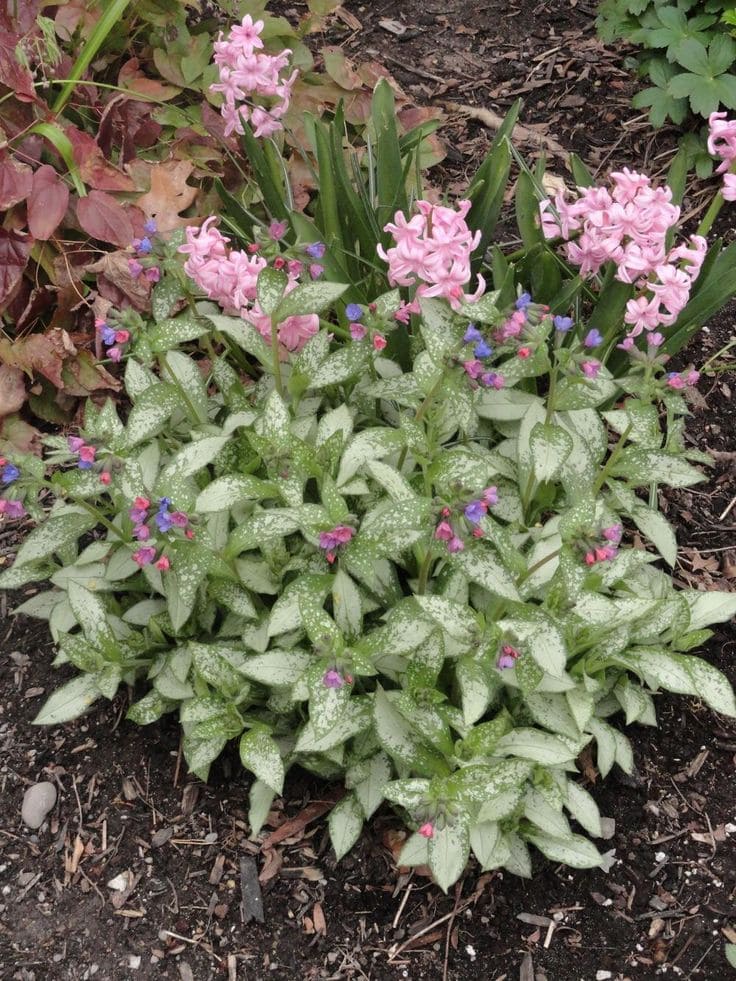
Lungwort’s speckled leaves alone are enough to earn it a spot in any shade garden. But when it bursts into bloom, shifting from pink to blue on the same stem, it becomes something truly magical. I grow a patch beneath our crabapple tree, where it thrives quietly among the fallen petals.
It likes rich, moist soil and will spread slowly, forming a dense, weed-suppressing carpet. Its flowers arrive early in spring—often when little else is blooming.
Personal note: Lungwort is one of the first signs of life in my garden each year. Seeing those freckles and pink buds always lifts my heart.
#8. Hellebore (Helleborus spp.)
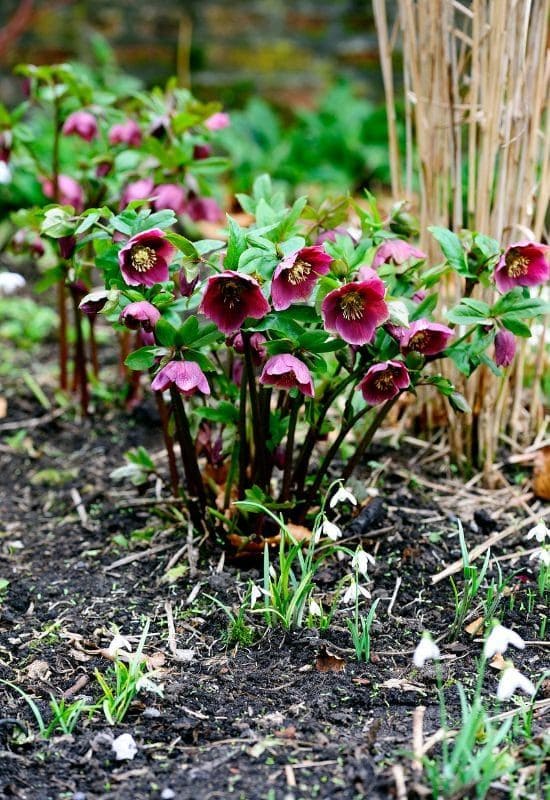
Hellebores are the kind of flower you notice on a gray day. When winter still lingers, they emerge with nodding blossoms in soft greens, purples, whites, and dusky pinks. My first hellebore bloomed while there was still frost on the ground—I didn’t believe my eyes.
They’re evergreen, dependable, and elegant without being flashy. Tuck them into shady borders and they’ll bloom quietly from late winter to early spring.
Tip: Trim away last year’s old leaves in early spring to make way for fresh growth and clearer blooms.
#9. Toad Lily (Tricyrtis spp.)
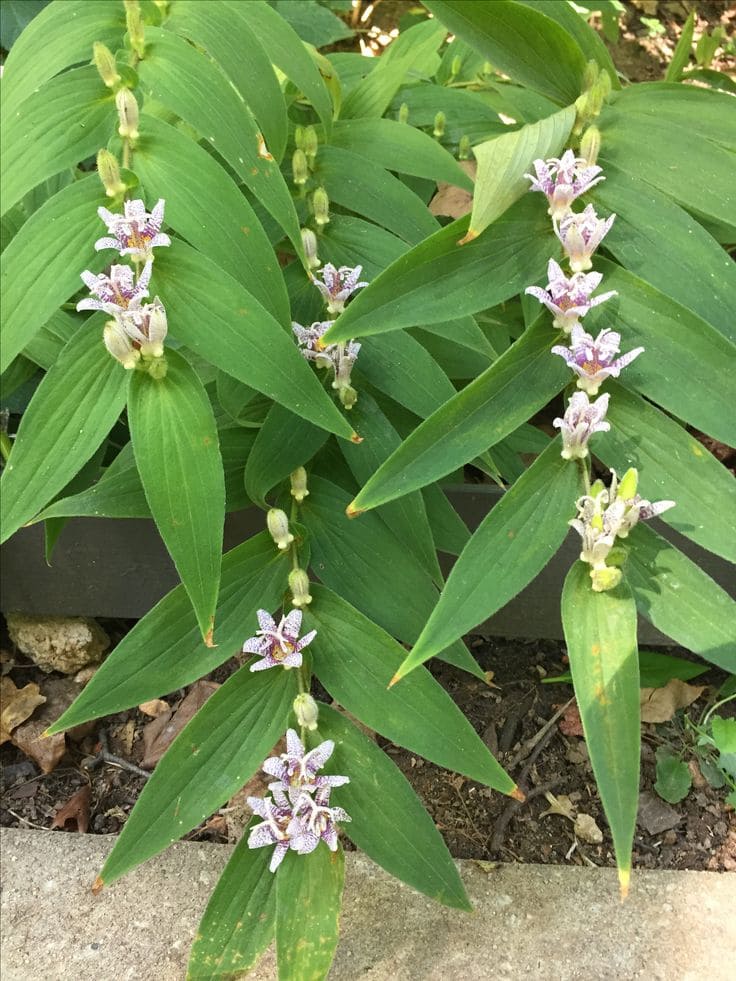
Toad lilies are little garden secrets. Their orchid-like flowers appear late in the season, just when most blooms are winding down. Each one is speckled and intricate—like something you’d expect to find deep in a jungle, not tucked into a shady garden bed.
They love moist soil and dappled light. I planted mine beneath a hydrangea, and they surprise me every fall with their jewel-toned beauty.
Gardening friend’s advice: “You have to crouch down to appreciate them. That’s how they teach you to slow down.”
#10. Begonia (Begonia spp.)
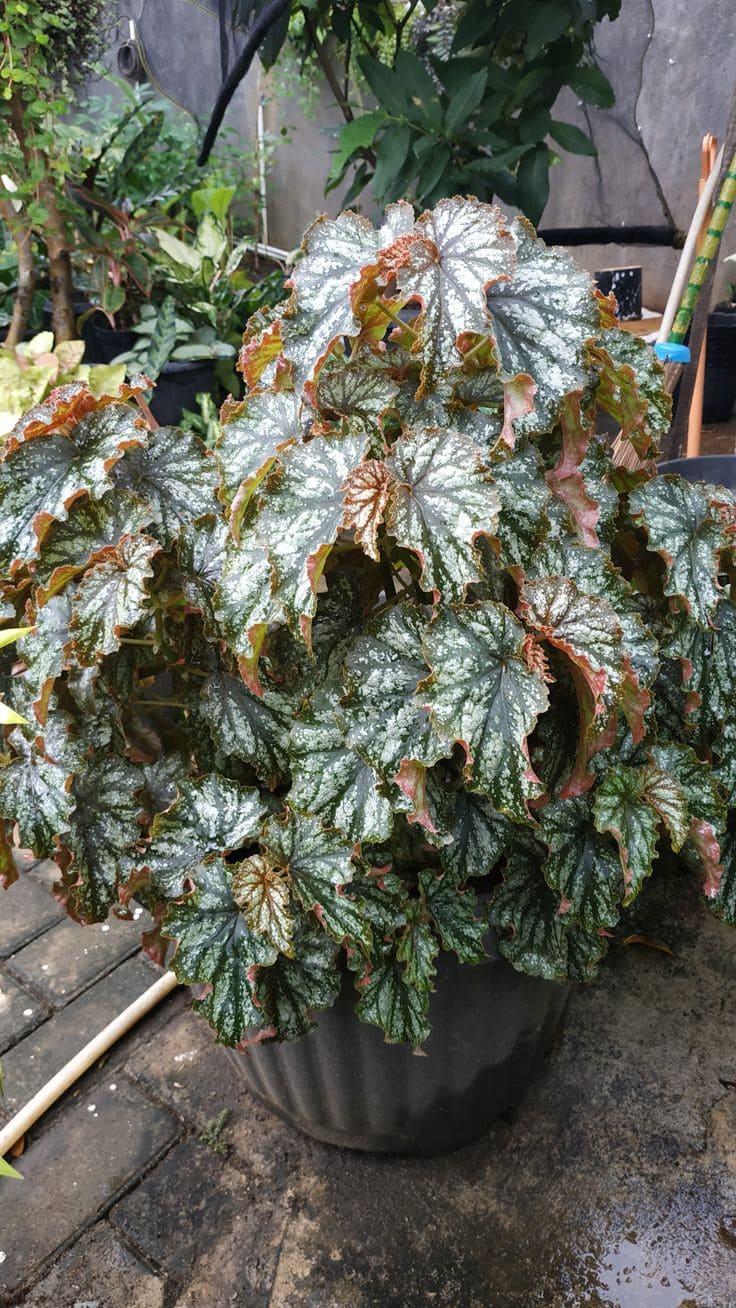
I used to think begonias were just summer bedding plants—until I discovered the rex varieties with their wild, metallic leaves and deep shadows. Whether you prefer blooms or foliage, there’s a begonia for you.
They thrive in containers or beds, and they love the shade like few others do. Water when the soil feels dry to the touch, and avoid overhead watering if possible.
Note: I keep a wax begonia by my back door that blooms from late spring into autumn without fail. It’s my cheerful greeter.
#11. Coral Bells (Heuchera spp.)
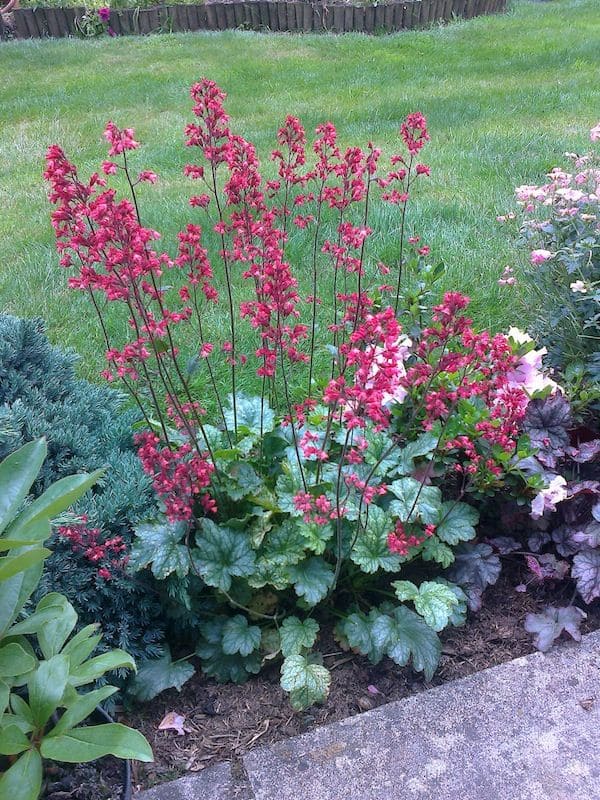
Heucheras are the unsung heroes of the shade garden. With foliage ranging from caramel to deep purple to lime green, they provide color year-round—even when nothing’s in bloom. I have them edging my shady path, and they shimmer with dew in the morning light.
They’re tough once established, preferring partial shade and good drainage. Their delicate flowers are a bonus, especially when pollinators come calling.
Tip: Mix several colors together—they look stunning when grouped.
#12. Japanese Anemone (Anemone hupehensis)
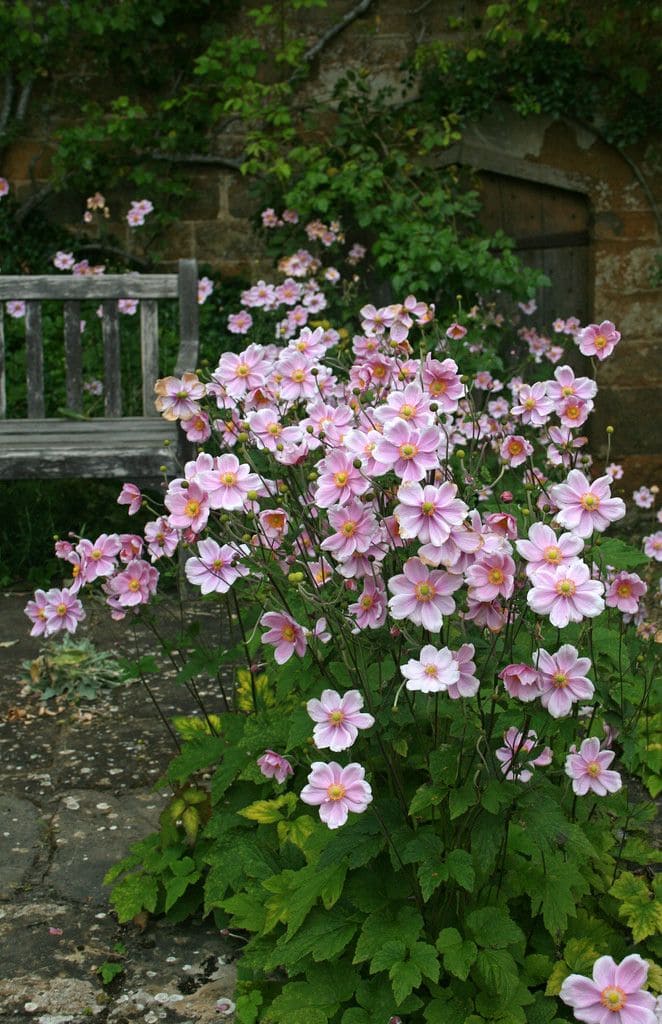
There’s something graceful about Japanese anemones. Their long, slender stems sway like dancers, topped with soft pink or white blooms that seem to glow in late summer light. I first saw them blooming against a mossy stone wall and was instantly enchanted.
They prefer partial shade and need room to spread. Once they settle in, they return faithfully year after year.
Advice: Don’t move them once planted. Let them find their place and reward you with effortless beauty.
#13. Foamflower (Tiarella cordifolia)
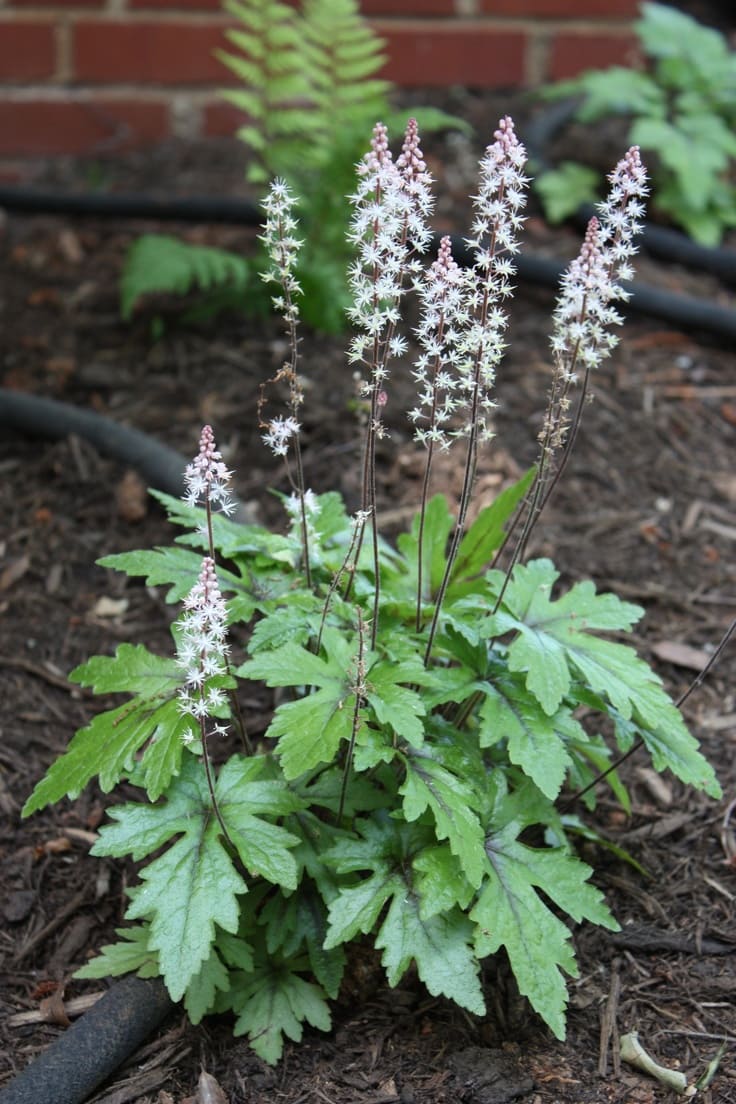
Foamflowers may be small, but they bring a lot of charm. Their heart-shaped leaves are lovely on their own, but when those frothy flower spikes emerge in spring, they sparkle like garden confetti.
They love moist, shady soil and are perfect for edging woodland beds or softening stone borders. In my garden, they cozy up to ferns and mosses like they’ve always belonged there.
Note: Their foliage often turns red or bronze in autumn—an added bonus for fall interest.
#14. Caladium (Caladium bicolor)

If shade gardens had fireworks, caladiums would be them. Their giant, heart-shaped leaves come in vibrant patterns of pink, white, red, and green. I use them in containers near the back patio, and even without blooms, they steal the show.
They thrive in heat and humidity, so give them warmth, filtered shade, and consistent moisture. In cooler climates, treat them as annuals or dig and store the tubers before frost.
My favorite: ‘White Queen’—a stunner with translucent veins and bold contrast.
#15. Jack-in-the-Pulpit (Arisaema triphyllum)
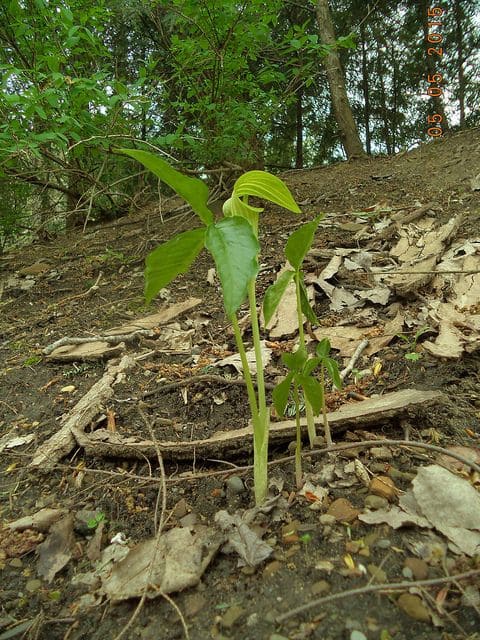
Jack-in-the-Pulpit is a native curiosity that feels straight out of a woodland fairytale. Its hooded flower structure hides a “preacher” inside, and kids always find it fascinating. I discovered it growing wild on a hike and later tucked a few into my own garden.
It prefers rich, moist soil and deep shade. Once established, it naturalizes beautifully, returning stronger each year.
Note: In fall, it produces bright red berries that add a pop of unexpected color to the forest floor.
#16. Columbine (Aquilegia spp.)
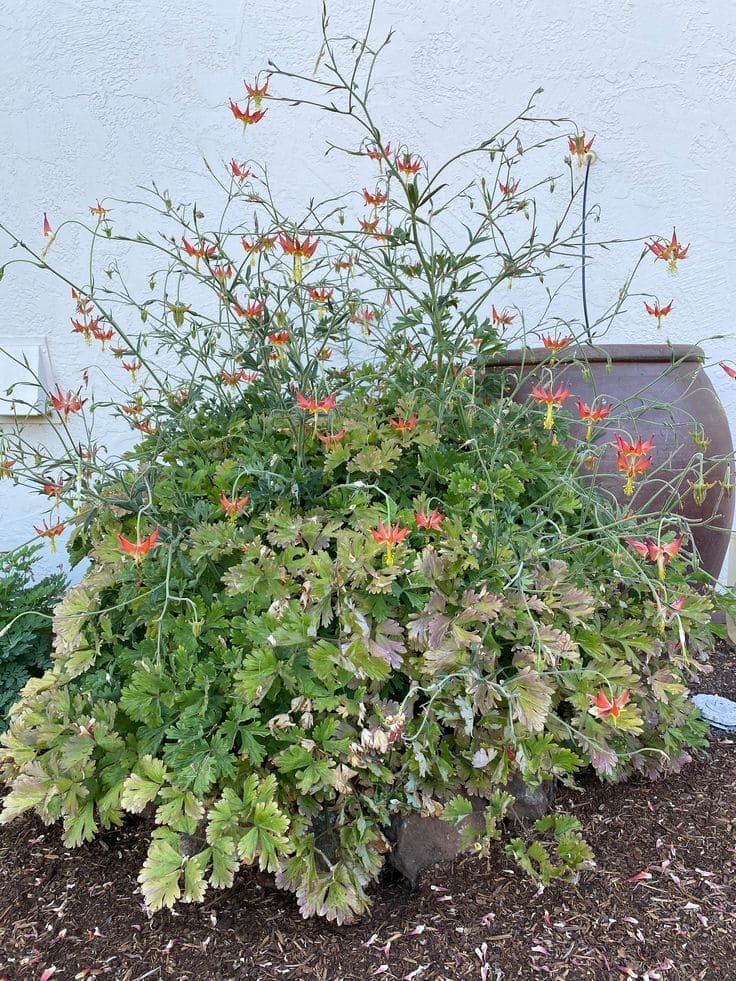
Columbines have a whimsical, delicate look that belies their toughness. Their spurred flowers nod like tiny lanterns in the breeze, and I adore the way they self-seed gently around the garden.
They prefer partial shade and don’t mind a little dryness once they’re established. I’ve grown them in both containers and beds, and they never fail to delight.
My grandmother used to call them “little doves.” Every time I see one, I think of her.
#17. Barrenwort (Epimedium spp.)
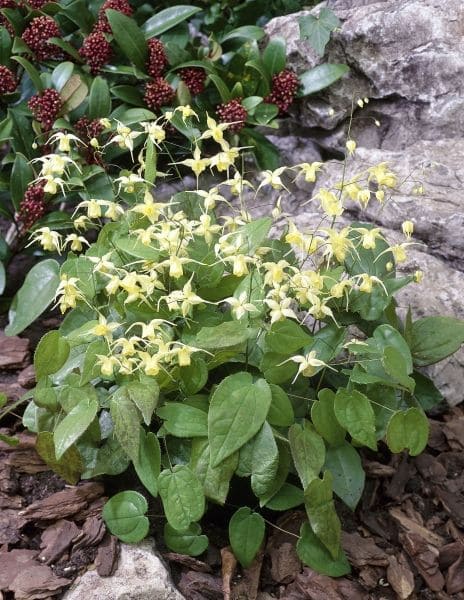
Sometimes you need a plant that’s both tough and elegant—barrenwort is that plant. With heart-shaped leaves that often blush red in spring and autumn, and tiny flowers like dancing stars, it’s ideal for dry, shady spots.
It spreads slowly and quietly, making it perfect for under trees where grass struggles. Once established, it asks for little and gives a lot.
Tip: Cut back old foliage in late winter to let spring blooms take center stage.
#18. Lamium (Lamium maculatum)
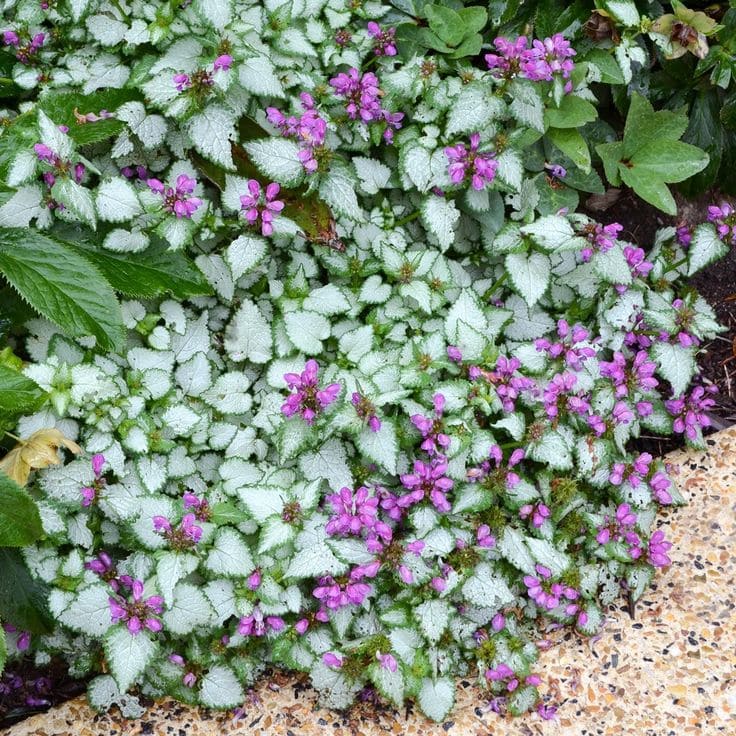
Lamium, or dead nettle, is a humble plant with silver-patterned leaves that brighten even the gloomiest corners. I’ve used it as a ground cover beneath shrubs, and its soft pink or purple flowers peek out like shy surprises.
It spreads quickly but not aggressively, and it tolerates foot traffic better than most shade plants.
Gardening tip: It pairs beautifully with spring bulbs and fills in the gaps once their show is over.
#19. Trillium (Trillium spp.)
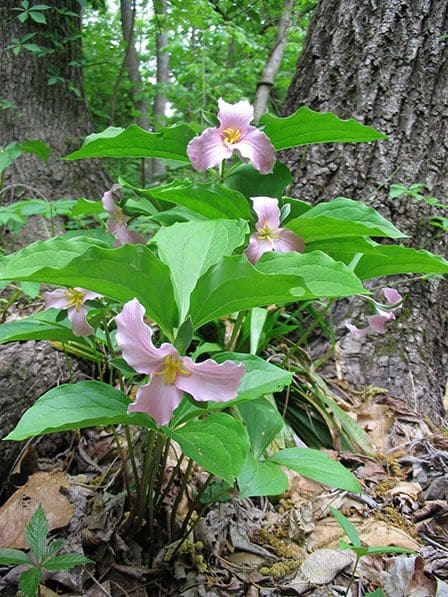
There’s something reverent about trilliums. They emerge slowly, each plant bearing a single flower with three pristine petals. In our local forest preserve, I wait every year for their quiet appearance in early spring.
They prefer deep shade, rich soil, and cool conditions. In the right spot, they’ll come back reliably and spread over time.
Advice: Never dig them from the wild—buy from reputable nurseries and protect native populations.
#20. Virginia Bluebells (Mertensia virginica)
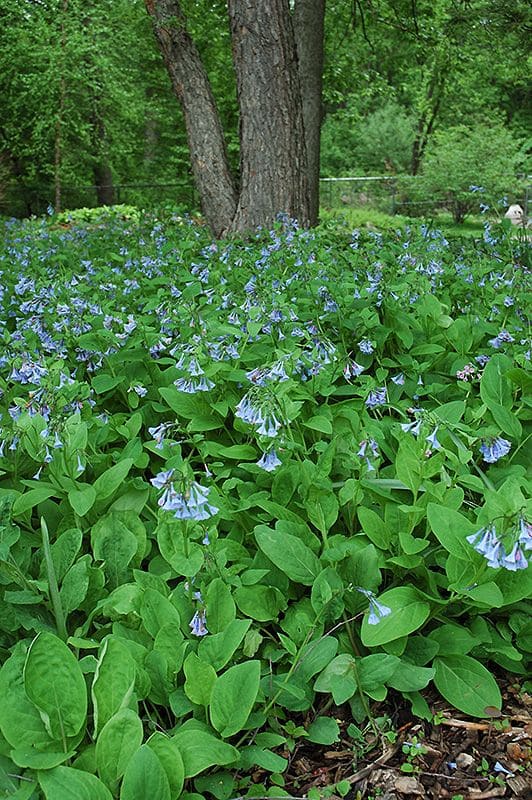
The first time I saw a drift of Virginia bluebells, I was stopped in my tracks. Their soft pink buds open to the most heavenly sky-blue flowers, nodding gently in spring’s breeze. It felt like stepping into a dream.
They love woodland settings, where the soil stays moist and the light is dappled. After blooming, they quietly disappear until next year.
Tip: Pair with hostas or ferns that fill in the space once the bluebells go dormant.
Final Thoughts
Shade doesn’t mean dull. In fact, once you start planting for it, you realize it offers a special kind of peace—a space where soft colors glow, textures shine, and quiet beauty thrives. These 20 flowers have filled my own garden with serenity and surprise, and I hope they do the same for yours.
Whether you’re working with deep woodland soil or just a shaded corner of your patio, there’s something on this list waiting to be planted and loved. Trust your eye, follow the light (or the shadows), and most of all, don’t be afraid to experiment.
Every garden teaches something—and in the shade, those lessons come gently. Let me know which blooms speak to you most. I’d love to hear your garden stories.

